Power consumption/voltage peaks
I have recorded a little bit how the power consumption turns out with different variants of tweaking. For this I have logged the power consumption in three scenarios.
- Undervolting with fixed voltage close to the stick performance
- Stock
- With limited power limit
- Overclocked with offset.
The pictures speak for themselves, so it’s best to read them yourself. In summary, however, it can be said that the card absorbs significantly less energy with undervolting and produces a very clearly defined and straight-line load. With this version you can also use smaller power supplies without any problems and without voltage peaks.
Here the measurement series of the lowering of the power limit with overclocked card:
Now overclocked with maximum power target
Stick adjustment, lowering of the power limit to -80%
And then finally undervoltage with 850 mv at 1.8GHz.
Igor has already excellently recorded the violent deflections when setting the stick. Interesting here in the comparison, however, that if you reduce the power limit further, the card produces even more severe load fluctuations. Sometimes the card also drops to clock rates of 1500 MHz only in order to boost up to 1900 MHz in the next moment. That’s heavy work for a power supply. I don’t recommend simply lowering the power limit because of this fact, it’s not healthy for the components when you’re constantly having such violent swings. On the other hand the UV version with nice smooth power consumption and also super frametimes.
Conclusion and summary
At the moment, I clearly recommend the simple OC variants with the +offset on memory and core, possibly with a very slight adjustment of the curve by modifying the slope a bit more or artificially masking the maximum clock rates for stability. For Undervolting you should look for your personal sweetspot somewhere between 750-850 mv. Below 1.8 GHz, the card becomes much more gracious. Also make that a little bit dependent on the resolution you use. A light memory OC thereby compensates for loss of power. But generally overclocking on the memory of the cards is of very little use.
Finally, a comparison of Stock…
vs. UV with memory OC of the 3080 TUF
I hope you have found some impressions in the article and wish you a lot of fun while tweaking.














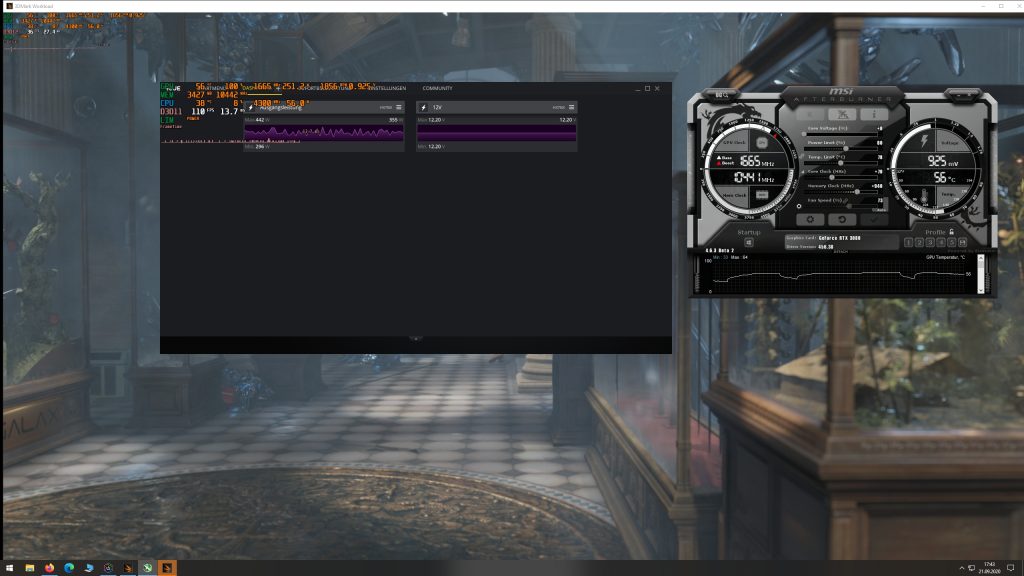
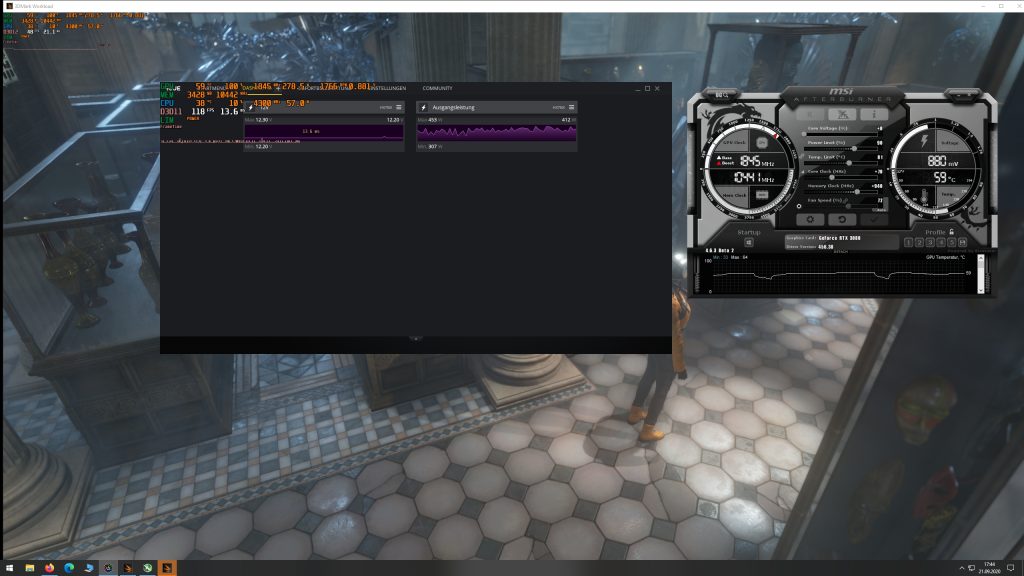
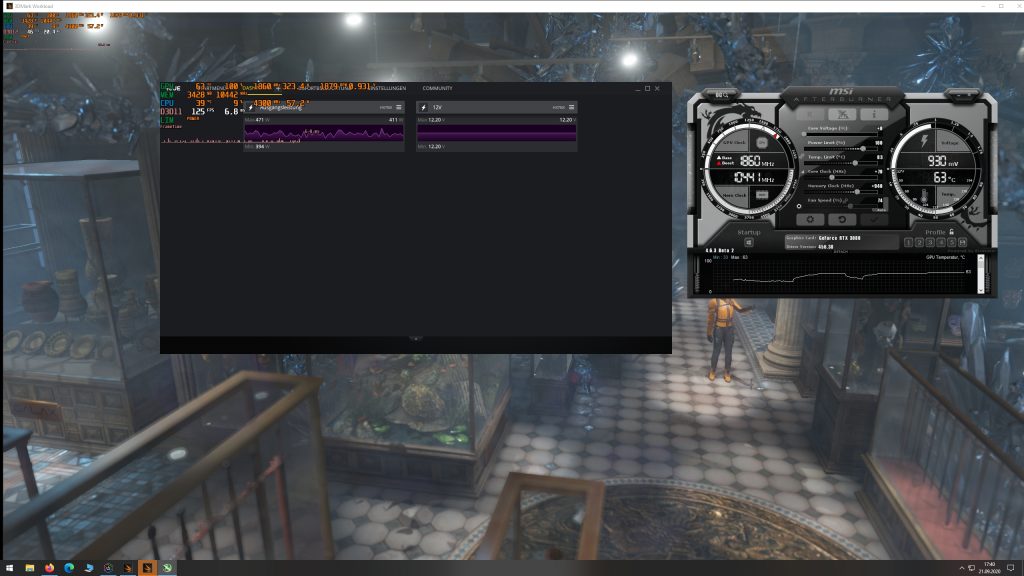
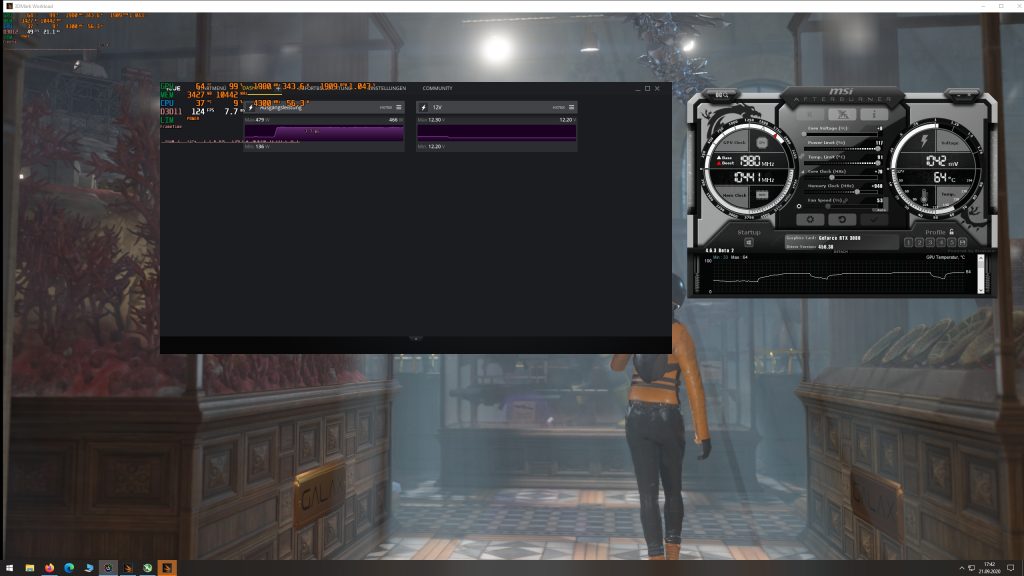
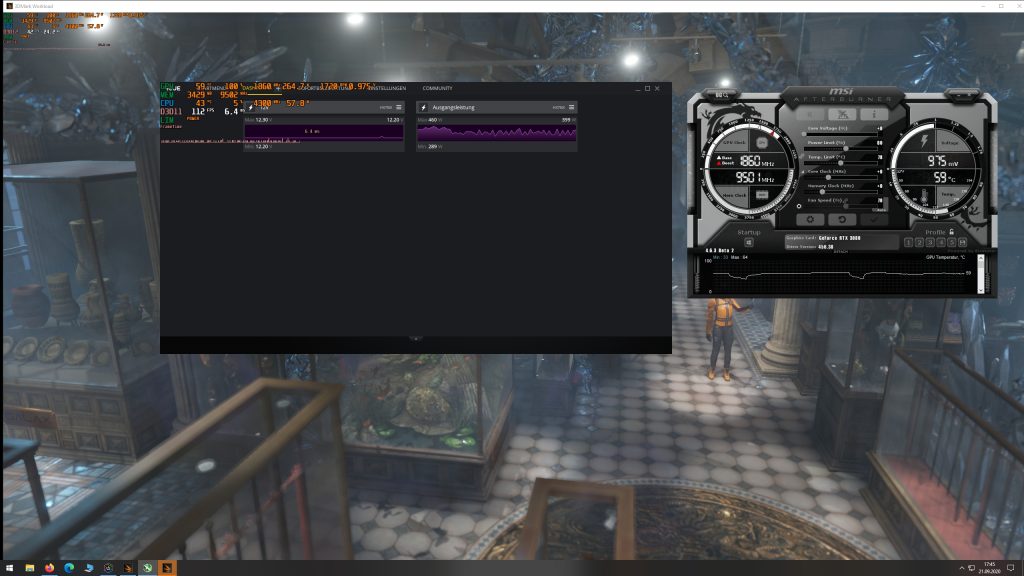
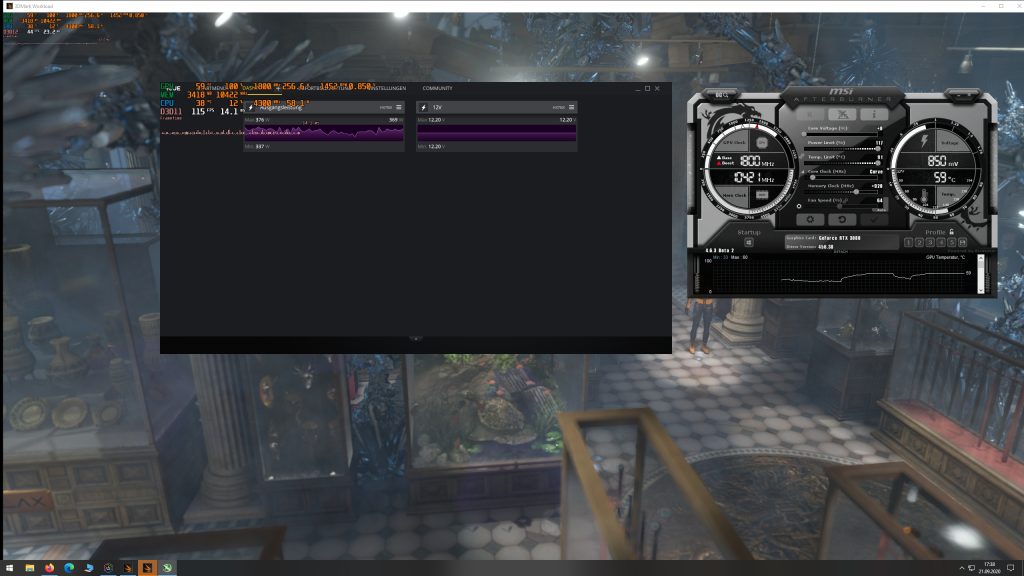
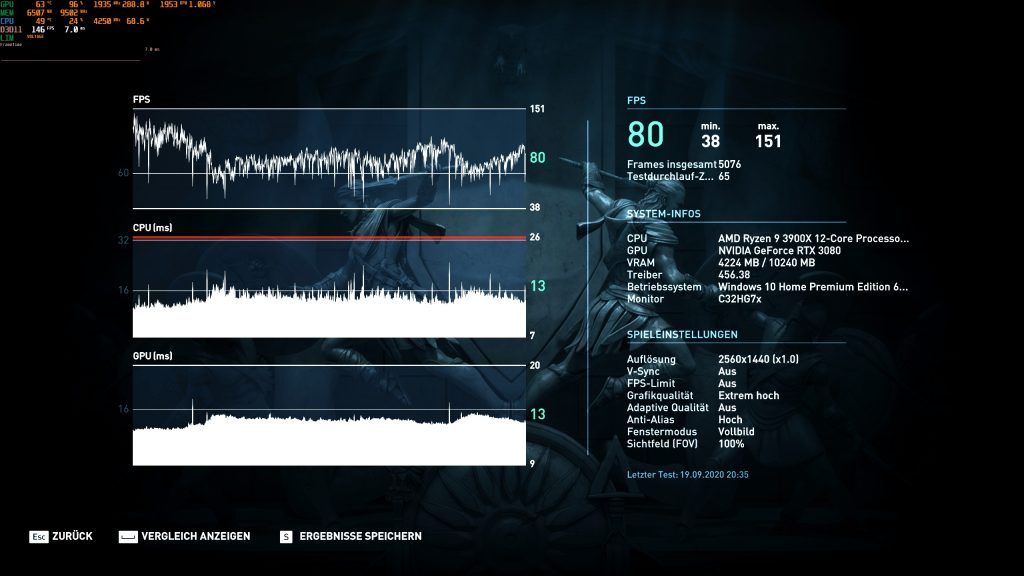
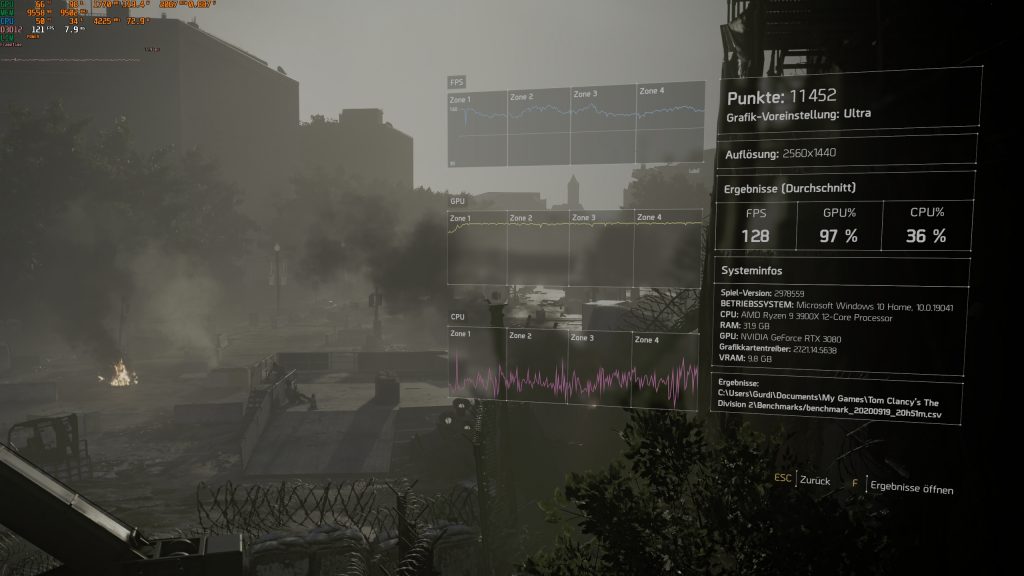
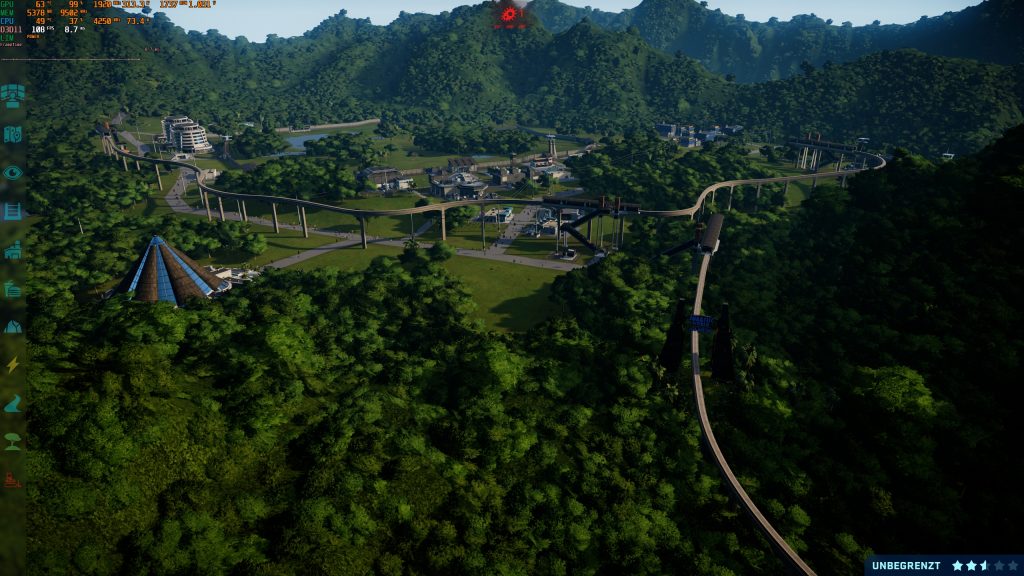
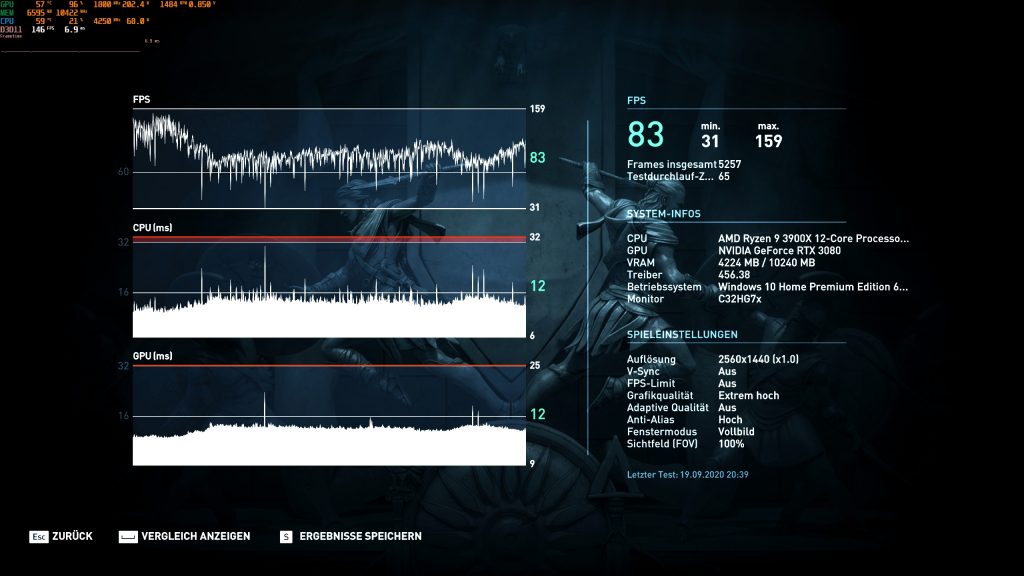
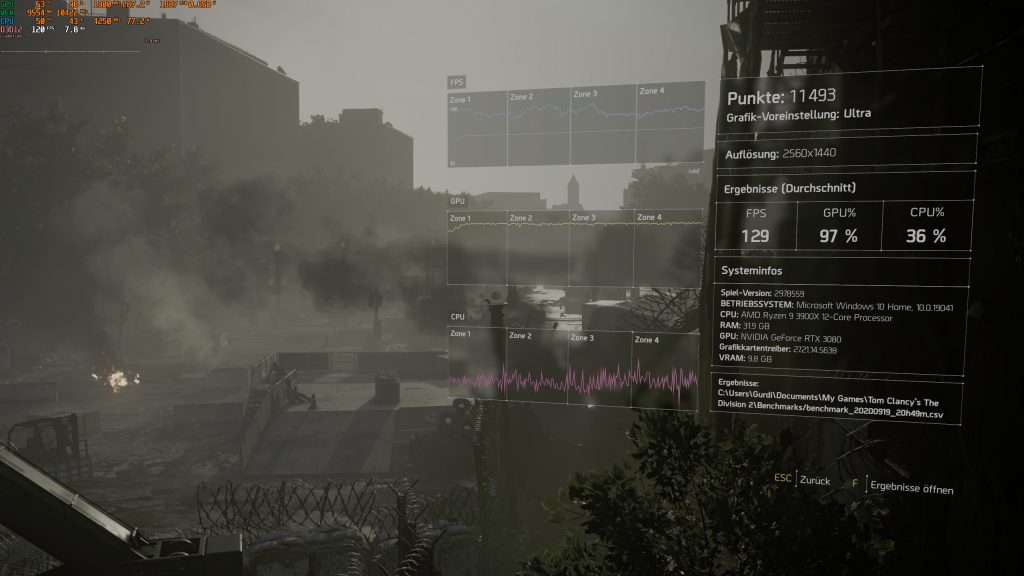
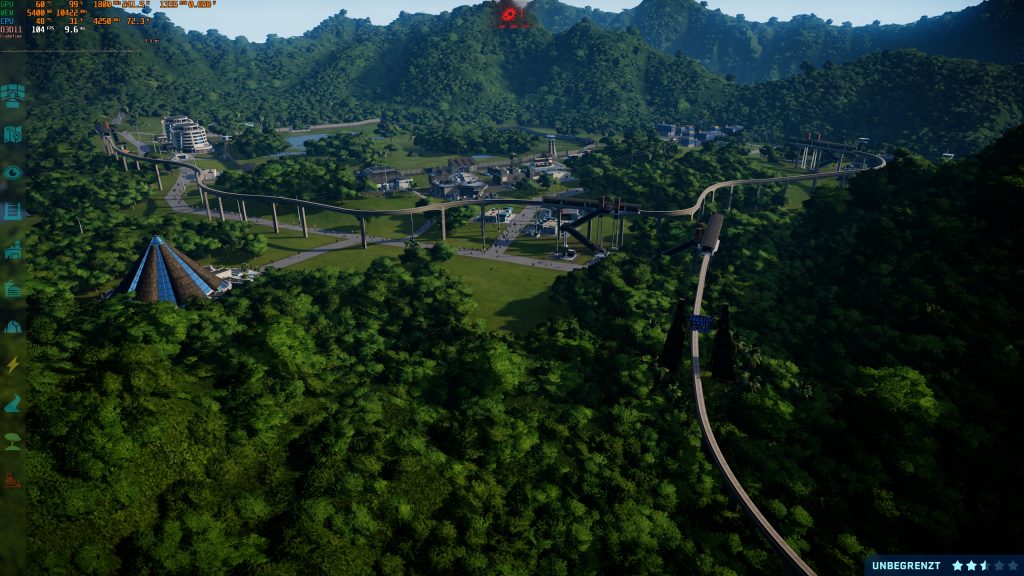


















Kommentieren